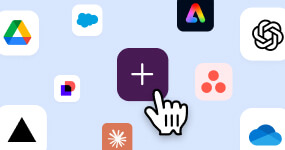If you’re working remotely, you’ve probably heard at least one “Brady Bunch" reference during an online meeting by now. While during a global health crisis there is some level of comfort from seeing our coworkers’ faces lined up in a grid, that connection comes at a price.
Think about it: When was the last time you held unwavering eye contact with someone for an hour? If we’re in a crowded elevator, we look at the floor. If someone close by is staring, we take a step back. We use different personal space techniques to always maintain an appropriate level of intimacy—which fails to translate online when you’re staring “at a huge face inches from your own.”
So says Dr. Jeremy Bailenson, the founding director of Stanford University’s Virtual Human Interaction Lab. We recently talked with him about the effects of nonverbal overload: long stretches of close, nonstop gaze. Read on to learn more about this phenomenon and for tips on maintaining trust and connection with team members without defaulting to another staring contest video conference.
What is nonverbal overload?
Bailenson says that, “Nonverbal overload comes from hours and hours of sitting in one of these [virtual] meetings constantly getting both close personal space and direct eye gaze.”
While we might be paying more attention when the camera is on, a study done by Bailenson’s lab showed that students who were stared at by their instructor for an entire virtual class were more productive than students who were not, but reported feeling exhausted and uncomfortable afterward.
“It’s a trade-off in which, yes, there is a maximized productivity, but it wears people down,” Bailenson says.
Tips for reducing nonverbal overload while remote working
Despite some drawbacks, video conferencing remains an invaluable tool during this pandemic. Practicing the following habits with your team can help maximize connection while minimizing exhaustion.
1. Save video for important meetings
Our focus admittedly drifts when the camera is off, and sometimes that’s OK. For meetings in which it’s critical to catch every word and show others that you’re listening—such as a client meeting—get everyone on video. For more routine meetings, say a team standup or biweekly check-in, let everyone know it’s OK to be audio-only.
2. Don’t schedule back-to-back meetings
In-person meetings give us valuable buffer time as we move from one meeting room to the next, maybe grabbing a sip of water in between. In virtual meetings, however, we jump straight from one browser window to the next in a matter of seconds, further exacerbating the strain of nonverbal overload. Try scheduling a 10-minute break in between your meetings and use that time to pause and reset.
3. When you need a break, tell your team
According to Bailenson’s research, our limits for nonverbal overload range drastically depending on the person. So listen to yourself: Are you feeling uncomfortable or unusually tired after a video conference or two?
“It’s always OK to ask your colleagues, ‘I need to turn my camera off for a minute. Do you mind?’ ” Bailenson says. If you’re a manager, set a healthy culture for your remote team by encouraging employees to speak up when they need a break from the camera.
4. The phone still works
The phone has worked for a long time and it still works now. (In fact, we got all this information—this tip included—on a good ol’ phone call with Bailenson!) If you’re able and your city guidelines permit, pick up the phone and take a safe, socially distant stroll for your next one-on-one.
Looking for the ultimate guide to remote meetings? We’ve covered it all: etiquette, agenda setting, engagement and more.
Many of us are still adapting to remote work, so take a moment to pause and listen to your body. If you’re drained from staring at faces on screens for hours on end, share this article with your team and your manager. Then maybe suggest that your next meeting be a screen-free one-on-one instead.






